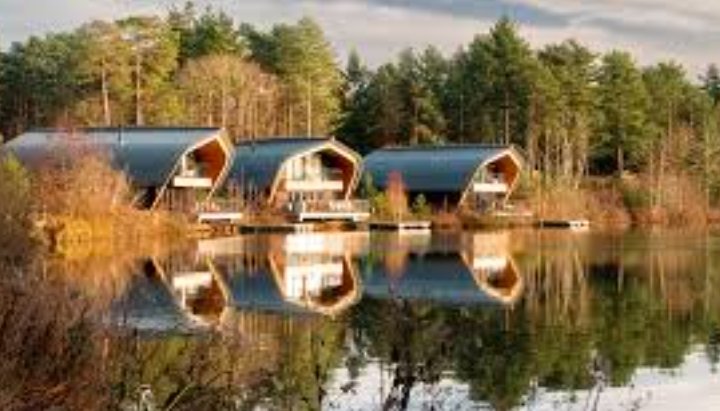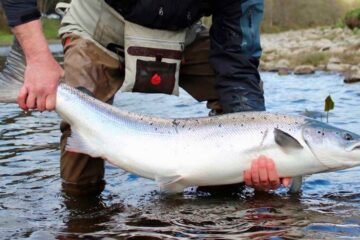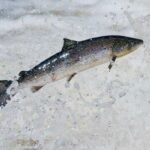£400m Hawick holiday village could deliver 1,200 jobs and draw thousands of visitors, says CEO
Scotland could finally get its first Center Parcs holiday village by spring 2029, as the company prepares to file a planning application for a major £400 million resort in the Borders.
Colin McKinlay, chief executive of Center Parcs, confirmed the timeline in an interview with BBC Radio Scotland’s Drivetime programme, stating that the development—just north of Hawick—could bring significant economic and employment benefits to the area both during and after construction.
The proposed site would feature 700 forest lodges, leisure facilities, and retail spaces, modelled on the company’s existing six resorts across the UK and Ireland.
Planning for 2029
If the application process goes smoothly, construction could begin in 2027. The company is targeting an opening date in early 2029.
“All being well, we’d like to submit a planning application by the summer,” McKinlay said. “Once that’s done, we are a little bit in the hands of the process.”
That process includes extensive environmental and traffic impact assessments, a standard part of any major tourism development. McKinlay expressed confidence that the proposal meets Center Parcs’ stringent internal criteria and fits well with the region.

Why the Borders?
The Borders wasn’t always an obvious choice. But McKinlay says once they looked closely, it became the frontrunner.
“It fits so many of our criteria in terms of the area, in terms of the demographic profile of people around the area,” he explained. “It was staring us in the face.”
While Scotland has long been a major outbound market for Center Parcs—with thousands travelling south annually to sites in Cumbria and Northumberland—the company never had a presence north of the border. This site would change that.
Boost to local economy
The economic case for the project is significant:
-
£400 million investment in construction and infrastructure
-
Around 1,200 permanent and seasonal jobs created once operational
-
Ongoing local procurement of goods and services
McKinlay insisted the new resort wouldn’t become a sealed-off holiday bubble. “Once we open, we look to procure as many goods and services as we can locally—that has an impact on local business,” he said.
Critics have in the past accused Center Parcs of offering limited benefit to communities beyond its gates. But McKinlay pushed back on that.
He pointed to the company’s newest resort in Ireland, where many young people had chosen to stay in the area rather than move away, thanks to the new job opportunities. “That was our experience in our last village we built in Ireland,” he said.
Jobs, retention, and youth opportunity
The potential impact on the local job market could be transformative. With rural Scotland facing a growing brain drain, the promise of stable, year-round employment—especially for younger people—has been warmly received in some quarters.
“Wherever possible, we will look to employ locally,” McKinlay stated. “We want to offer opportunities that might stop people leaving the region.”
It’s not just jobs in hospitality and leisure either. Center Parcs sites typically require IT, logistics, catering, maintenance, and guest services roles—offering a range of career paths.
What the site may include
Though final designs haven’t been submitted, the resort is expected to include:
-
700 woodland lodges (ranging from family-sized to luxury)
-
Indoor subtropical swimming complex
-
Restaurants, cafés, and shops
-
Wellness spa and sports facilities
-
Outdoor activities like zip lines, biking trails, and nature walks
Here’s how it compares to existing UK Center Parcs resorts:
| Resort Location | Year Opened | No. of Lodges | Jobs Created |
|---|---|---|---|
| Sherwood Forest | 1987 | 866 | 1,500+ |
| Woburn Forest | 2014 | 625 | 1,500+ |
| Longford Forest (IE) | 2019 | 466 | 1,000+ |
| Scottish Borders | Expected 2029 | 700 | ~1,200 |
Still hurdles to clear
Despite the optimism, nothing is guaranteed.
Large-scale developments like this are subject to rigorous planning scrutiny. Environmental concerns are likely to be front and centre, especially given the site’s location within a semi-rural, ecologically sensitive area.
McKinlay acknowledged this directly, confirming that full environmental and traffic assessments are integral to the planning process.
The company will also need to win over locals—something it has begun to address through public information days, such as the most recent one held in Selkirk.
“Explore the area as well”
One criticism often levelled at Center Parcs is that its visitors rarely venture beyond the resort. McKinlay pushed back on that narrative, saying guests typically stay for 3–4 nights and frequently take time to explore the surrounding area.
“They come for the resort experience but also go out to explore,” he said.
If approved, the new resort could become a cornerstone of Scotland’s domestic tourism offering—potentially drawing visitors not just from Scotland, but from northern England and even further afield


















